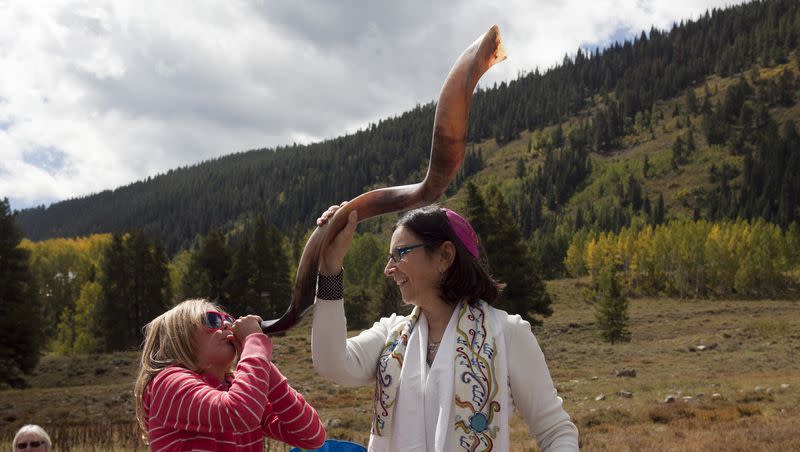Rosh Hashana begins Friday. Here’s what you need to know about the major Jewish holiday

The Jewish New Year, Rosh Hashana, begins Friday at sundown. It marks the start of the Jewish High Holidays, a 10-day period that culminates with Yom Kippur.
Rosh Hashana is “a time of prayer, self-reflection and t’shuvah,” or new beginnings, according to the Union for Reform Judaism. It’s celebrated in synagogues and Jewish homes across the globe.
What is Rosh Hashana?
Rosh Hashana means “the head of the year,” as USA Today reported. Think of it like the Hebrew calendar’s version of New Year’s Day, except it would be New Year’s Days, since the holiday lasts two days.
“This year’s celebration will begin at sunset on Friday, Sept. 15 ... and continue through sundown on Sunday, Sept. 17,” USA Today reported.
Rosh Hashana begins the High Holidays, which is an opportunity for Jews to reflect on the past year, as well as the year ahead.
“It’s a time for new beginnings, for wiping the slate clean and starting over from scratch,” wrote David DeSteno, who hosts a podcast on the science of spirituality, in a recent New York Times essay.
Related
I miss Israel on the Jewish holidays. But, in America, I find signs and wonders, too
Opinion: Utah is one of the safest states for Jews as hate crimes rise
How is Rosh Hashana celebrated?
Rosh Hashana is celebrated in the synagogue and at home. Jews often attend formal worship services and then continue to pray and reflect on their own time.
Rosh Hashana involves “candle lighting in the evenings, festive meals with sweet delicacies during the night and day (and) prayer services that include the sounding of the ram’s horn,” or shofar, according to Chabad.org.
Prayers and readings associated with Rosh Hashana deal with themes like creation, transformation and, perhaps counterintuitively, death.
“The liturgy includes the recitation of a poem, the Unetaneh Tokef, part of which is meant to remind Jews that their lives might not last as long as they’d hope or expect,” DeSteno wrote.
What do you eat on Rosh Hashana?
In addition to reciting special prayers or poems and blowing the shofar, Jews celebrate Rosh Hashana by eating special foods, like apples and honey.
“Some Jewish people eat apples and honey together to represent a sweet new year,” USA Today reported. “People may also eat challah, a braided bread, in a round loaf to represent a cycle of the year.”
What do you say for Rosh Hashana?
Here are some phrases you can use to share Rosh Hashana greetings with members of the Jewish community:
Happy Rosh Hashana.
Happy new year.
Shanah tovah (This means “good year” in Hebrew, according to USA Today.)
Is Rosh Hashana a sad or happy holiday?
Although reflecting on your past failings and future death can bring up complicated, difficult feelings, Rosh Hashana and the High Holidays period, in general, aren’t as depressing as you might assume, DeSteno noted in his New York Times essay.
“Contemplating death helps people make decisions about their future that bring them more happiness,” he wrote. “The particular brilliance of Rosh Hashana is that it combines thoughts of death with a new year’s focus on a fresh start.”
When is Rosh Hashana?
Rosh Hashana changes dates each year because it’s based on the Hebrew calendar. In 2023, it begins at sundown on Friday, Sept. 15.
Next year, it will start on Oct. 2, according to the Union for Reform Judaism.

